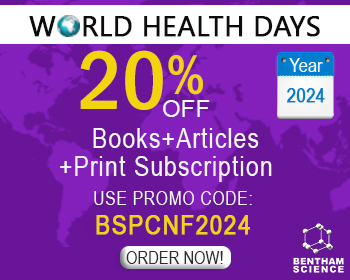Abstract
Glycosaminoglycans (GAGs) are very complex, natural anionic polysaccharides. They are polymers of repeating disaccharide units of uronic acid and hexosamine residues. Owing to their template-free, spatiotemporally-controlled, and enzyme-mediated biosyntheses, GAGs possess enormous polydispersity, heterogeneity, and structural diversity which often translate into multiple biological roles. It is well documented that GAGs contribute to physiological and pathological processes by binding to proteins including serine proteases, serpins, chemokines, growth factors, and microbial proteins. Despite advances in the GAG field, the GAG-protein interface remains largely unexploited by drug discovery programs. Thus, Non-Saccharide Glycosaminoglycan Mimetics (NSGMs) have been rationally developed as a novel class of sulfated molecules that modulate GAG-protein interface to promote various biological outcomes of substantial benefit to human health. In this review, we describe the chemical, biochemical, and pharmacological aspects of recently reported NSGMs and highlight their therapeutic potentials as structurally and mechanistically novel anti-coagulants, anti-cancer agents, anti-emphysema agents, and anti-viral agents. We also describe the challenges that complicate their advancement and describe ongoing efforts to overcome these challenges with the aim of advancing the novel platform of NSGMs to clinical use.
Keywords: Glycosaminoglycans, sulfated molecules, non-saccharide glycosaminoglycan mimetics, anticoagulants, anticancer, antivirals.
[http://dx.doi.org/10.1111/j.1747-0285.2008.00741.x] [PMID: 19090915]
[PMID: 20301236]
[http://dx.doi.org/10.1016/j.carres.2006.12.019] [PMID: 17229412]
[http://dx.doi.org/10.3390/ph11010027] [PMID: 29495527]
[http://dx.doi.org/10.1016/S1367-5931(00)00145-9] [PMID: 11102866]
[http://dx.doi.org/10.1002/1521-3773(20020201)41:3<390:: AID-ANIE390>3.0.CO;2-B] [PMID: 12491369]
[http://dx.doi.org/10.1124/pr.115.011247] [PMID: 26672027]
[http://dx.doi.org/10.1016/j.sbi.2015.06.004] [PMID: 26164146]
[http://dx.doi.org/10.3389/fimmu.2015.00231] [PMID: 26029216]
[http://dx.doi.org/10.1093/glycob/cwy003] [PMID: 29340594]
[http://dx.doi.org/10.1042/bj2890313] [PMID: 8380990]
[http://dx.doi.org/10.1039/b100916h] [PMID: 12137280]
[http://dx.doi.org/10.1016/0092-8674(91)90308-L] [PMID: 2001586]
[http://dx.doi.org/10.1038/nrc842] [PMID: 12094238]
[http://dx.doi.org/10.1158/1535-7163.MCT-06-0082] [PMID: 16985046]
[http://dx.doi.org/10.1163/156856001300248443]
[http://dx.doi.org/10.1016/S1567-5769(02)00145-5] [PMID: 12489800]
[http://dx.doi.org/10.1016/j.joca.2005.12.005] [PMID: 16503173]
[http://dx.doi.org/10.1007/s00011-007-6168-5] [PMID: 17607549]
[http://dx.doi.org/10.1182/blood.V82.11.3253.3253] [PMID: 7694675]
[http://dx.doi.org/10.1007/978-1-4939-1714-3_45] [PMID: 25325982]
[http://dx.doi.org/10.2741/4455] [PMID: 27100505]
[http://dx.doi.org/10.1099/vir.0.82476-0] [PMID: 17374750]
[http://dx.doi.org/10.1155/2011/264350] [PMID: 21799659]
[http://dx.doi.org/10.1016/S0306-3623(96)00563-0] [PMID: 9352294]
[http://dx.doi.org/10.1016/j.antiviral.2011.12.006] [PMID: 22197247]
[http://dx.doi.org/10.2174/092986706777452470] [PMID: 16787222]
[http://dx.doi.org/10.1016/S1877-1173(10)93001-9] [PMID: 20807638]
[http://dx.doi.org/10.1152/physrev.1991.71.2.481] [PMID: 2006221]
[http://dx.doi.org/10.1002/(SICI)1521-1878(199802)20: 2<156::AID-BIES8>3.0.CO;2-R] [PMID: 9631661]
[http://dx.doi.org/10.1006/abbi.1997.0147] [PMID: 9210650]
[http://dx.doi.org/10.1021/bi980212x] [PMID: 9790687]
[http://dx.doi.org/10.1006/abbi.1995.9963] [PMID: 7487089]
[http://dx.doi.org/10.1016/S0022-2836(02)01382-7] [PMID: 12581643]
[http://dx.doi.org/10.1161/01.ATV.9.1.21] [PMID: 2463827]
[PMID: 1577724]
[PMID: 8366075]
[http://dx.doi.org/10.1074/jbc.273.22.13563] [PMID: 9593692]
[http://dx.doi.org/10.1186/1472-6807-7-1] [PMID: 17201922]
[http://dx.doi.org/10.1097/00001721-199306000-00013] [PMID: 8392392]
[http://dx.doi.org/10.2174/1871525712666141106095927] [PMID: 25374013]
[http://dx.doi.org/10.1021/cr010170+] [PMID: 12475206]
[http://dx.doi.org/10.1038/35038119] [PMID: 11057674]
[http://dx.doi.org/10.1002/med.10058] [PMID: 14705167]
[http://dx.doi.org/10.1021/bi981426h] [PMID: 9737884]
[http://dx.doi.org/10.1016/j.biochi.2010.05.011] [PMID: 20685328]
[http://dx.doi.org/10.1016/0006-291X(83)90550-8] [PMID: 6651824]
[http://dx.doi.org/10.1042/bj2180725] [PMID: 6721831]
[http://dx.doi.org/10.1038/sj.emboj.7601089] [PMID: 16619025]
[http://dx.doi.org/10.1038/nsmb811] [PMID: 15311269]
[http://dx.doi.org/10.1111/j.1432-1033.1978.tb12567.x] [PMID: 710412]
[http://dx.doi.org/10.1161/01.CIR.99.5.682] [PMID: 9950667]
[PMID: 1618758]
[http://dx.doi.org/10.1021/bi9702492] [PMID: 9184148]
[http://dx.doi.org/10.1074/jbc.M313962200] [PMID: 14701814]
[http://dx.doi.org/10.1016/S0300-9084(03)00078-6] [PMID: 12765778]
[http://dx.doi.org/10.1074/jbc.272.31.19393] [PMID: 9235938]
[http://dx.doi.org/10.1073/pnas.94.26.14683] [PMID: 9405673]
[http://dx.doi.org/10.1021/bi9928243] [PMID: 10913257]
[PMID: 6687888]
[http://dx.doi.org/10.1021/jm020012q] [PMID: 11881992]
[http://dx.doi.org/10.1021/jm020132y] [PMID: 12238925]
[http://dx.doi.org/10.1016/S0960-894X(02)01055-7] [PMID: 12639557]
[http://dx.doi.org/10.1016/j.bmc.2004.11.060] [PMID: 15698795]
[http://dx.doi.org/10.1016/j.bmc.2003.10.034] [PMID: 14738974]
[http://dx.doi.org/10.1016/j.ejmech.2008.09.042] [PMID: 18996625]
[http://dx.doi.org/10.1002/elps.200800642] [PMID: 19425011]
[http://dx.doi.org/10.1021/jm2008387] [PMID: 21800826]
[http://dx.doi.org/10.1002/iub.186] [PMID: 19180666]
[http://dx.doi.org/10.1021/cr000033x] [PMID: 12475199]
[http://dx.doi.org/10.1002/med.21503] [PMID: 29727017]
[http://dx.doi.org/10.1002/med.21315] [PMID: 24659483]
[http://dx.doi.org/10.1136/thx.2007.077768] [PMID: 18508983]
[http://dx.doi.org/10.2147/COPD.S10770] [PMID: 21857781]
[http://dx.doi.org/10.1111/j.1538-7836.2007.02496.x] [PMID: 17635714]
[http://dx.doi.org/10.1021/bi0345586] [PMID: 14596625]
[http://dx.doi.org/10.1021/bi0027433] [PMID: 11412111]
[PMID: 8288594]
[http://dx.doi.org/10.1074/jbc.M411606200] [PMID: 15548541]
[http://dx.doi.org/10.1073/pnas.0711055105] [PMID: 18362344]
[http://dx.doi.org/10.1074/jbc.275.5.3320] [PMID: 10652320]
[http://dx.doi.org/10.1074/jbc.273.47.31153] [PMID: 9813019]
[http://dx.doi.org/10.1074/jbc.273.26.16382] [PMID: 9632702]
[http://dx.doi.org/10.1160/TH13-04-0290] [PMID: 24048327]
[http://dx.doi.org/10.1016/0020-711X(83)90161-1] [PMID: 6222929]
[http://dx.doi.org/10.1515/bchm.1997.378.12.1481] [PMID: 9461347]
[http://dx.doi.org/10.1016/S0009-2797(97)00045-8] [PMID: 9291994]
[http://dx.doi.org/10.1042/cs0810341] [PMID: 1655335]
[http://dx.doi.org/10.1021/bi060338r] [PMID: 16866356]
[http://dx.doi.org/10.1016/j.bmcl.2009.06.013] [PMID: 19540113]
[http://dx.doi.org/10.1021/jm2005767] [PMID: 21714536]
[http://dx.doi.org/10.1021/jm300670q] [PMID: 22788964]
[http://dx.doi.org/10.1016/j.bmcl.2018.01.069] [PMID: 29459207]
[http://dx.doi.org/10.1021/jm400369q] [PMID: 23718540]
[http://dx.doi.org/10.1038/srep24043] [PMID: 27053426]
[http://dx.doi.org/10.1021/jm301338q] [PMID: 23316863]
[http://dx.doi.org/10.1021/jm500311e] [PMID: 24844380]
[http://dx.doi.org/10.1016/j.thromres.2015.04.017] [PMID: 25935648]
[http://dx.doi.org/10.1021/jm301757v] [PMID: 23451707]
[http://dx.doi.org/10.3390/molecules20010608] [PMID: 25569517]
[http://dx.doi.org/10.1021/acs.jmedchem.6b01474] [PMID: 27976897]
[http://dx.doi.org/10.1056/NEJM199802123380706] [PMID: 9459648]
[http://dx.doi.org/10.1016/S0165-6147(98)01247-4] [PMID: 9786026]
[http://dx.doi.org/10.1182/blood.V90.3.909] [PMID: 9242519]
[http://dx.doi.org/10.1146/annurev.immunol.18.1.217] [PMID: 10837058]
[http://dx.doi.org/10.1021/bi990711d] [PMID: 10504268]
[http://dx.doi.org/10.1016/j.cytogfr.2005.04.006] [PMID: 15990353]
[http://dx.doi.org/10.1016/j.bbagen.2008.09.001] [PMID: 18835578]
[http://dx.doi.org/10.1074/jbc.270.7.3268] [PMID: 7852412]
[http://dx.doi.org/10.1016/S0960-9822(00)00088-9] [PMID: 7922353]
[http://dx.doi.org/10.1186/gb-2001-2-3-reviews3005] [PMID: 11276432]
[http://dx.doi.org/10.1007/978-3-642-23056-1_13] [PMID: 22566230]
[http://dx.doi.org/10.1038/nrc2780] [PMID: 20094046]
[http://dx.doi.org/10.1021/bi00200a003] [PMID: 7520751]
[http://dx.doi.org/10.1016/j.bpj.2013.02.051] [PMID: 23601319]
[http://dx.doi.org/10.1021/bi00179a006] [PMID: 8142385]
[http://dx.doi.org/10.1128/JVI.63.1.52-58.1989] [PMID: 2535752]
[http://dx.doi.org/10.1172/JCI200113799] [PMID: 11518721]
[http://dx.doi.org/10.1128/JVI.00296-06] [PMID: 16940509]
[http://dx.doi.org/10.1007/s00705-013-1831-3] [PMID: 24046088]
[http://dx.doi.org/10.1074/jbc.M800066200] [PMID: 18378683]
[http://dx.doi.org/10.1021/acsmedchemlett.7b00364] [PMID: 30128070]
[http://dx.doi.org/10.1111/cbdd.12109] [PMID: 23350710]
[http://dx.doi.org/10.1016/j.chembiol.2004.11.020] [PMID: 15797210]
[http://dx.doi.org/10.1093/glycob/5.1.83] [PMID: 7772871]
[http://dx.doi.org/10.1038/nbt0310-203] [PMID: 20212477]
[http://dx.doi.org/10.1038/nbt1407] [PMID: 18437154]
[http://dx.doi.org/10.1056/NEJMoa0806450] [PMID: 19052120]
[http://dx.doi.org/10.1056/NEJMoa0803200] [PMID: 18434646]
[http://dx.doi.org/10.1039/b819896a] [PMID: 19240943]
[http://dx.doi.org/10.1007/s00253-011-3801-6] [PMID: 22391966]
[http://dx.doi.org/10.3390/ph9030038] [PMID: 27384570]
[http://dx.doi.org/10.1038/nrd2852] [PMID: 19629075]
[PMID: 20040279]
[http://dx.doi.org/10.1007/978-1-4939-1714-3_24] [PMID: 25325961]
[http://dx.doi.org/10.1093/glycob/cwu077] [PMID: 25049239]
[http://dx.doi.org/10.1021/jm060092o] [PMID: 16759098]
[http://dx.doi.org/10.1371/journal.pone.0141127] [PMID: 26488293]
[http://dx.doi.org/10.1093/glycob/cwu045] [PMID: 24859723]
[http://dx.doi.org/10.1021/acs.chemrev.6b00010] [PMID: 27410264]
[http://dx.doi.org/10.1093/glycob/cwt016] [PMID: 23481097]
[http://dx.doi.org/10.1016/j.addr.2015.11.002] [PMID: 26555370]
[http://dx.doi.org/10.1093/glycob/cww055] [PMID: 27496767]
[http://dx.doi.org/10.1007/978-1-4939-1714-3_7] [PMID: 25325944]
[http://dx.doi.org/10.1055/s-0030-1258228]
[http://dx.doi.org/10.1038/nchem.1073] [PMID: 21697878]
[http://dx.doi.org/10.1039/b802217h] [PMID: 18563243]
[http://dx.doi.org/10.1016/S0076-6879(10)78009-5] [PMID: 20816481]
[http://dx.doi.org/10.4155/fmc.13.117] [PMID: 23919545]
[http://dx.doi.org/10.1002/med.21282] [PMID: 23553315]
[http://dx.doi.org/10.1039/c003913f] [PMID: 20539873]
[http://dx.doi.org/10.1021/cb3005935] [PMID: 23181429]
[http://dx.doi.org/10.1002/cbic.200800528] [PMID: 19021141]
[http://dx.doi.org/10.1021/jm0492960] [PMID: 15715496]
[http://dx.doi.org/10.1021/jm0503648] [PMID: 16078853]
[http://dx.doi.org/10.1016/j.bmc.2006.07.066] [PMID: 16914317]
[http://dx.doi.org/10.1074/jbc.M109.013359] [PMID: 19497853]
[http://dx.doi.org/10.1021/jm1013117] [PMID: 21138266]
[http://dx.doi.org/10.1021/jm2006589] [PMID: 21732671]
[http://dx.doi.org/10.1016/j.ejmech.2011.03.016] [PMID: 21450376]
[http://dx.doi.org/10.1152/physrev.00016.2011] [PMID: 23303912]
[http://dx.doi.org/10.1182/blood.V86.8.3035.3035] [PMID: 7579397]
[http://dx.doi.org/10.1074/jbc.M008160200] [PMID: 11084032]
[PMID: 2538457]
[http://dx.doi.org/10.1074/jbc.M704257200] [PMID: 17804413]
[http://dx.doi.org/10.1016/j.bbrc.2011.08.102] [PMID: 21893043]
[http://dx.doi.org/10.1021/jm4020026] [PMID: 24635452]
[http://dx.doi.org/10.1016/j.bbrc.2014.09.003] [PMID: 25201728]
[http://dx.doi.org/10.1111/jth.13254] [PMID: 26748875]
[http://dx.doi.org/10.1002/med.21489] [PMID: 29446104]
[http://dx.doi.org/10.1517/13543776.2016.1154045] [PMID: 26881476]
[http://dx.doi.org/10.1016/j.thromres.2011.11.051] [PMID: 22197449]
[http://dx.doi.org/10.1182/blood-2009-09-199182] [PMID: 20110423]
[http://dx.doi.org/10.1111/j.1538-7836.2009.03414.x] [PMID: 19630773]
[http://dx.doi.org/10.1016/0049-3848(81)90314-5] [PMID: 6457414]
[http://dx.doi.org/10.1055/s-0038-1647810] [PMID: 235160]
[http://dx.doi.org/10.1055/s-0038-1657362] [PMID: 6224310]
[http://dx.doi.org/10.1042/bj1990521] [PMID: 6462134]
[http://dx.doi.org/10.1160/TH09-07-0454] [PMID: 20024500]
[http://dx.doi.org/10.1371/journal.pone.0160189] [PMID: 27467511]
[http://dx.doi.org/10.1172/JCI75386] [PMID: 24983320]
[http://dx.doi.org/10.1182/blood-2015-06-652263] [PMID: 26324704]
[http://dx.doi.org/10.1172/JCI20741] [PMID: 15173886]
[http://dx.doi.org/10.1055/s-0037-1613342] [PMID: 12529747]
[http://dx.doi.org/10.1016/j.bmcl.2012.04.014] [PMID: 22627041]
[http://dx.doi.org/10.1016/S0049-3848(14)50016-3] [PMID: 24862153]
[http://dx.doi.org/10.1021/cb500402f] [PMID: 24968014]
[http://dx.doi.org/10.1158/1535-7163.MCT-18-0104] [PMID: 30337351]
[http://dx.doi.org/10.1371/journal.pone.0171619] [PMID: 28182755]
[http://dx.doi.org/10.18632/oncotarget.12358] [PMID: 27705927]
[http://dx.doi.org/10.1016/j.pupt.2012.12.009] [PMID: 23280431]
[http://dx.doi.org/10.1007/s00408-014-9597-2] [PMID: 24831783]
[http://dx.doi.org/10.1016/j.pupt.2017.06.007] [PMID: 28648907]
[http://dx.doi.org/10.1016/j.antiviral.2008.05.007] [PMID: 18606464]
[http://dx.doi.org/10.1080/08927014.2017.1391951] [PMID: 29171304]
[http://dx.doi.org/10.1038/srep42424] [PMID: 28205590]
[http://dx.doi.org/10.3389/fimmu.2012.00293] [PMID: 23087686]
[http://dx.doi.org/10.1371/journal.ppat.1003757] [PMID: 24278017]
[http://dx.doi.org/10.1016/j.tet.2010.02.015] [PMID: 20689724]
[http://dx.doi.org/10.1073/pnas.1523981113] [PMID: 27091995]
[http://dx.doi.org/10.1038/nsmb0116-91] [PMID: 26733221]
[http://dx.doi.org/10.1074/jbc.M110.160184] [PMID: 21115492]
[http://dx.doi.org/10.1073/pnas.0910144107] [PMID: 20080729]
[http://dx.doi.org/10.1038/35039551] [PMID: 11069186]
[http://dx.doi.org/10.1016/S1097-2765(00)00073-3] [PMID: 11030354]
[http://dx.doi.org/10.1016/j.carbpol.2012.07.016] [PMID: 22944403]
[http://dx.doi.org/10.1016/j.jconrel.2007.08.007] [PMID: 17884230]
[http://dx.doi.org/10.1016/j.thromres.2005.03.027] [PMID: 15913716]
[http://dx.doi.org/10.1023/A:1026474919869] [PMID: 11145232]
[http://dx.doi.org/10.1211/jpp.58.5.0003] [PMID: 16640827]
[http://dx.doi.org/10.1002/ddr.20087] [PMID: 17710191]
[http://dx.doi.org/10.3390/ph9030037] [PMID: 27367704]
[http://dx.doi.org/10.1007/s40265-015-0423-9] [PMID: 26084940]
[PMID: 29182706]
[http://dx.doi.org/10.2147/IJNRD.S19165] [PMID: 22427728]
[http://dx.doi.org/10.1016/j.bmcl.2016.09.051] [PMID: 27720295]
[http://dx.doi.org/10.1016/j.bmcl.2017.08.013] [PMID: 28811133]
[http://dx.doi.org/10.1038/s41598-018-22303-y] [PMID: 29515206]
[http://dx.doi.org/10.1002/acn3.424] [PMID: 28695149]
[http://dx.doi.org/10.1038/s41467-017-00568-7] [PMID: 28894089]
[PMID: 1869557]
[PMID: 6448845]
[http://dx.doi.org/10.1002/prot.10590] [PMID: 14997572]
[http://dx.doi.org/10.1042/bj3120357] [PMID: 8526843]
[http://dx.doi.org/10.1016/0003-9861(85)90049-9] [PMID: 2409923]
[http://dx.doi.org/10.1016/S0092-8674(00)80058-6] [PMID: 10520990]
[http://dx.doi.org/10.1074/jbc.M202034200] [PMID: 12080045]
[http://dx.doi.org/10.1128/JVI.74.4.1948-1960.2000] [PMID: 10644368]


























